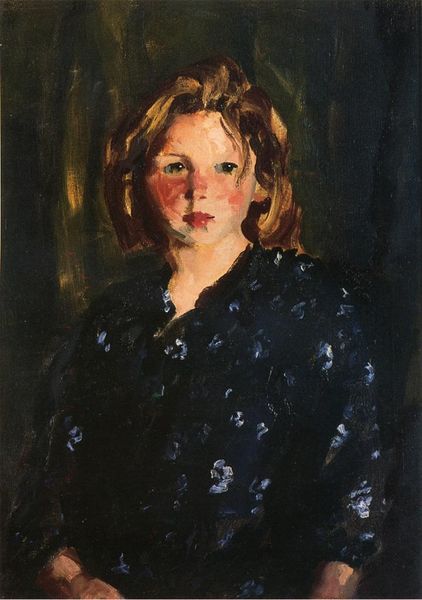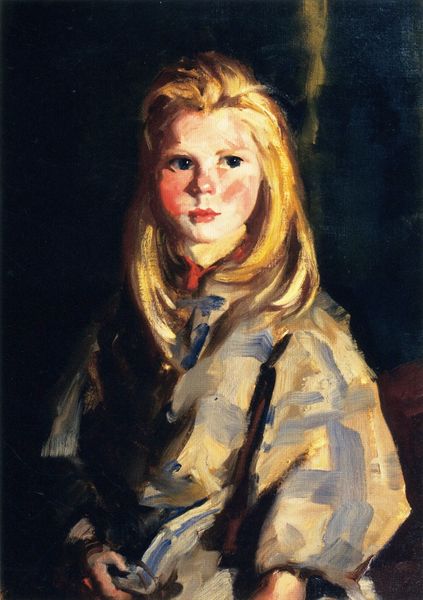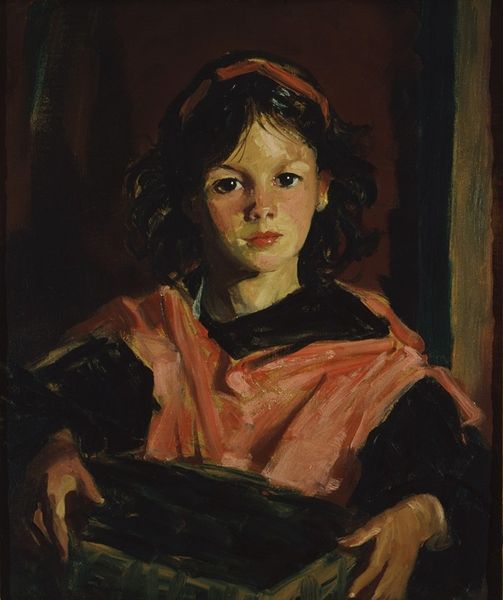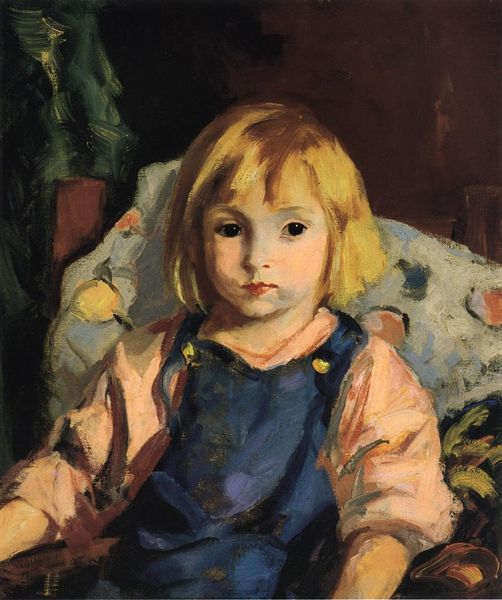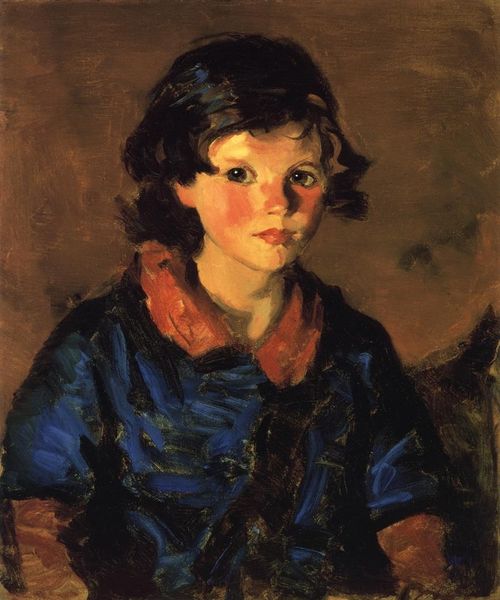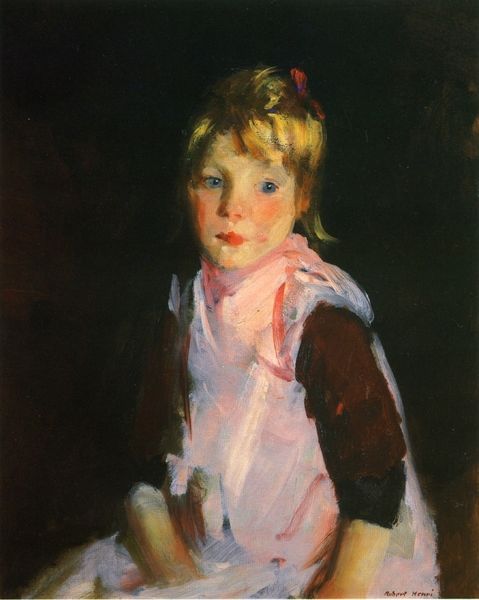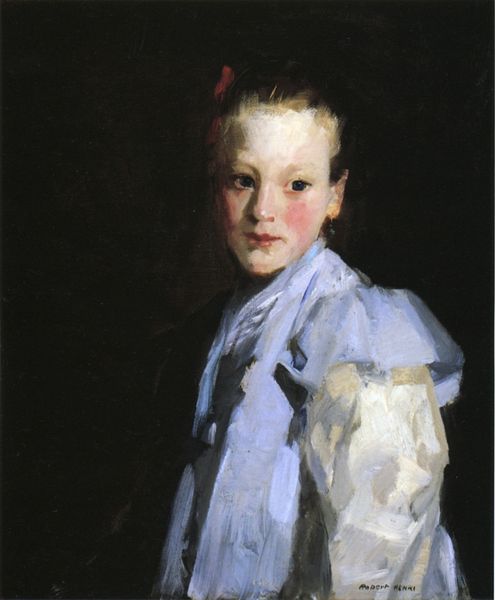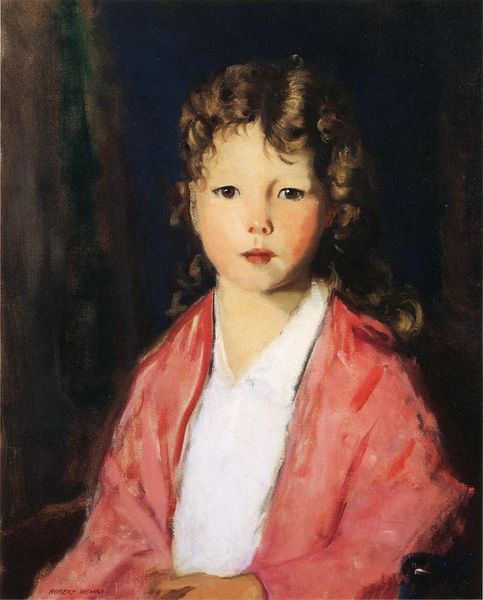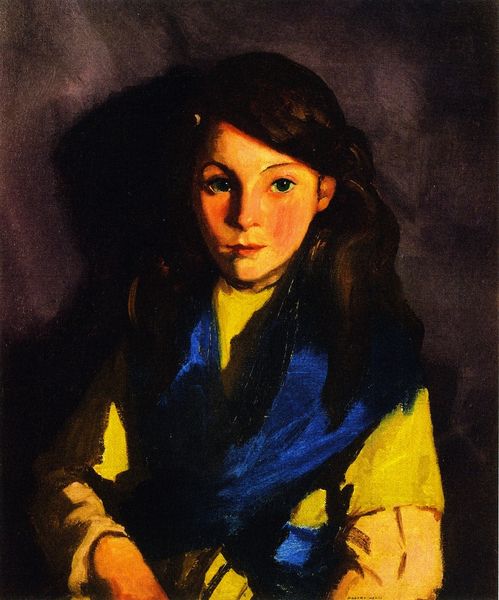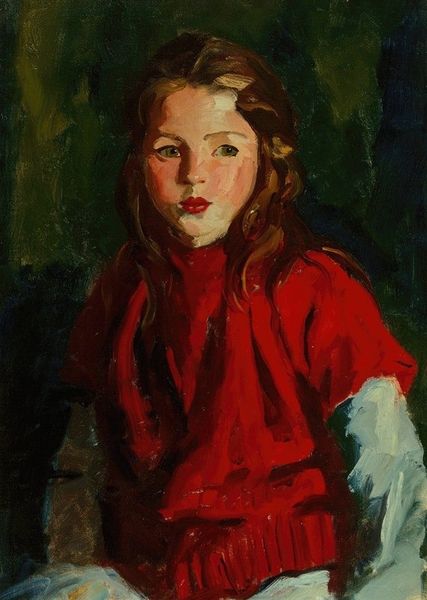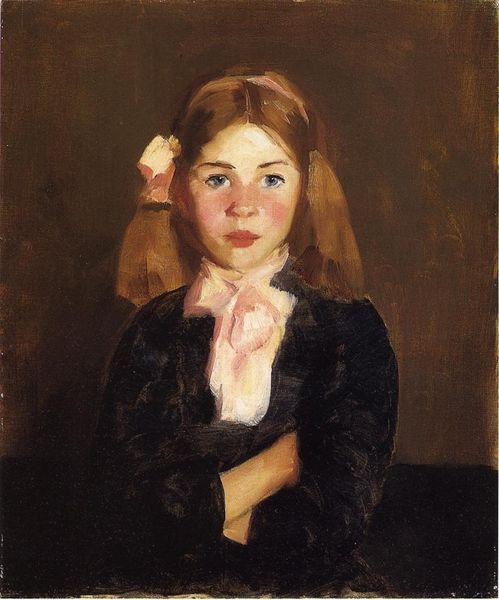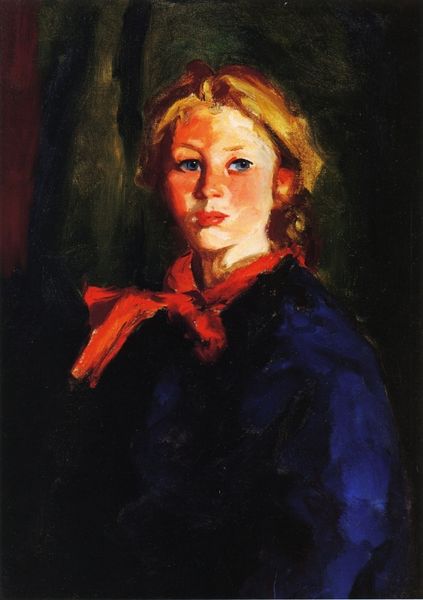
painting, oil-paint, impasto
#
portrait
#
portrait
#
painting
#
oil-paint
#
impasto
#
modernism
#
realism
Copyright: Public domain
Editor: This is Robert Henri’s "Blond Bridget Lavelle" from 1928, an oil painting on canvas. I find her gaze incredibly striking. She looks almost contemplative, set against this really dark, undefined background, but what's going on? What's *your* first impression? Curator: Well, she appears self-possessed, doesn't she? Even vulnerable. Her expression hints at a hidden story, which, naturally, draws you in, wouldn't you agree? It feels very direct. And those strokes! See how Henri uses visible brushwork to give her presence, but almost with a restless energy? Do you get that sense? It feels like an observation from life rather than an idealized depiction, doesn’t it? Almost spontaneous. The shadows across her face are pretty dramatic. Editor: Absolutely. It's almost as if Henri wanted to catch a fleeting moment, but...was it ever considered incomplete at that time because of that unfinished, painterly effect? Curator: You're onto something! The modernists of the era celebrated that loose style. They saw the artist's hand as part of the beauty. It emphasized authenticity, experience, in a way academics had resisted. Before, artworks tried to hide evidence of being 'made'. This era went for the 'reveal'—the real! It mirrors how people began understanding that imperfection IS the point. What do you take away from that idea, particularly from the point of view of someone just embarking in this journey? Editor: That imperfections are not to be hidden! I now see so much movement and life. It definitely made me see her beyond a pretty portrait. Curator: See how Henri invited you to question yourself? Works for me.
Comments
No comments
Be the first to comment and join the conversation on the ultimate creative platform.
